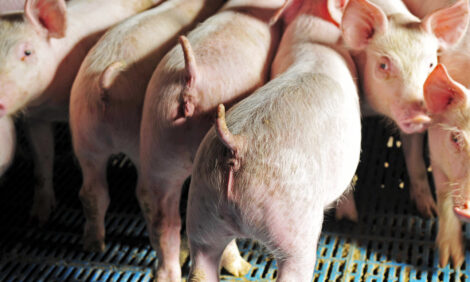



This Week's Pig Industry News
ANALYSIS - By far the leading topic in the news in the last week is the upward trend in feed prices. The effects of the present drought across much of the US on maize and soybean harvests have already been widely reported.Although the North American wheat harvest is looking good at this stage, harsh winter weather in the Russia, Ukraine and Kazakhstan have hit yields there and weather has also reduced harvests in other significant wheat-producing countries such as Australia, Argentina and Morocco.
Four new outbreaks of African Swine Fever have been reported in the Russian Federation.
Prospects for global grain stocks and prices for 2012/2013 could be bleaker than some analysts are already predicting, according to a new report.
In May and then again this month, the International Grains Council cut its production forecast for wheat by five million tonnes to 665 million tonnes. This is more than 30 million tonnes below the estimates for the 2011/2012 harvest or a four per cent drop.
Much of the reduction in wheat production has been put down to the forecast poor harvest in the former Soviet Union countries – in particular Russia, Ukraine and Kazakhstan – where the harvest is expected to be 17 per cent down on the 2011/2012 estimates – a fall of about 24 million tonnes.
The European Union suffered a huge freeze during the winter and is expected to see a four per cent drop in its wheat harvest or five million tonnes although, according to France AgriMer, the EU’s own forecasts are less pessimistic, reducing production by just two million tonnes.
These falls in production have to be added to the poor harvests in countries such as Australia, Argentina and Morocco, where wheat production could be reduced by as much as 40 per cent because of drought. Australian wheat production is expected to be reduced by 19 per cent to 24 million tonnes, and Argentina will be see a drop of 14 per cent to 11.5 million tonnes.
By contrast, North American wheat production is forecast to rise with the US expecting an 11 per cent rise and Canada a five per cent rise, producing a total of around 87 million tonnes.
As reported previously, drought across much of the US, however, is likely to hit the corn harvest hard and soybean volumes will also be down unless rain falls in the coming weeks.
Dry conditions are increasing feed prices and quickly spelling financial disaster for livestock producers, according to Purdue agricultural economist, Chris Hurt.
Lower harvests will inevitably raise feed prices. However, according to a Texas AgriLife Extension Service economist, the future of corn prices and the impact on fed livestock continue to form an unfolding, tumultuous situation but they have not reached crisis point – yet.
Continuing hot, dry weather and the continuing rise in feed prices. Corn and soybean prices have reached record levels in recent weeks, with corn at times above $8 per bushel, soybeans above $17 per bushel and soybean meal above $550 per ton, report Ron Plain and Scott Brown of the University of Missouri.
Of course, many leading pig producers will have made plans to mitigate the risks of exposure to high prices. For example, the world’s largest pork producer, Smithfield Foods Inc. of the US has said it will import corn from Brazil, a move that reflects how surging costs for US feed grains are rippling through the livestock and meat industry.
In Brazil, the agriculture minister has set a minimum price of R$0.40 (US$0.20) per kilo of pigs. The measure aims to ensure the flow of production from producing regions and cover the cost of production of the sector. This is just one of a series of measures to be announced recently to alleviate the industry’s problems.
A modest improvement in pig prices in recent weeks is being overshadowed by a surge in feed prices in Scotland.
Australian feed grain prices increased dramatically in July, underpinned by developments in international markets.
The International Feed Industry Federation (IFIF) has voiced an urgent concern that the rise in feed and food costs will continue unabated for the foreseeable future, in large part due to the diversion of feed and food grains and oilseeds into biofuels. This will result in critical pressure on feed manufacturers worldwide and higher prices for consumers.
Changing the subject, three new outbreaks of African Swine Fever were reported by the Russian veterinary service in the regions of Krasnodar and Volgograd last week, and one new outbreak in Tver.






